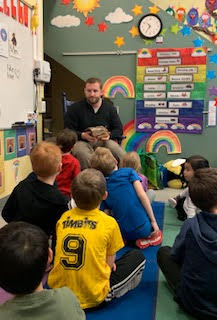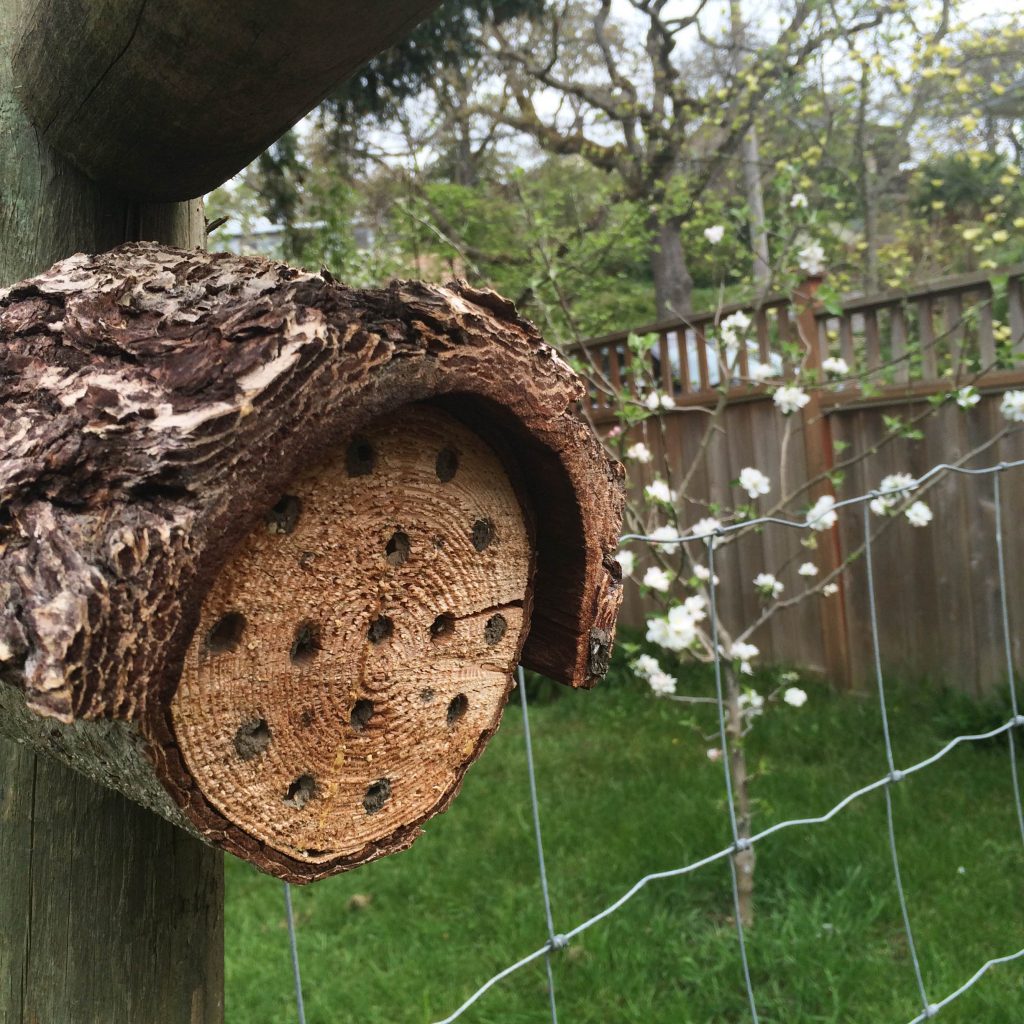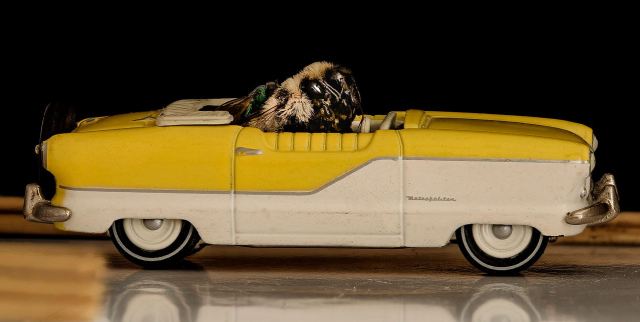Over the past several months I have been visiting school classrooms to speak to the young students about bees. We talked about honeybees and how they play an important role in food production – not just by producing delightful honey, but by doing the very important work pollinating flowers.

We talked about Bumblebees and how they are similar, but different from honeybees. Another type of bee we talked about was the Mason Bee. Everyone was interested to see how different they look from honey bees – and hear about how they live alone, don’t sting and don’t produce honey.
There was also a lot of talk about wasps and how they are the usual culprits for stings. We talked about how bees are general fuzzy and hairy (to help collect pollen) and how wasps are usually shiny and look mean.
I was able to provide each of the classes with a mason bee hive to put up and the kids were excited for May, when the mason bees will come and find the mason bee homes and start to work.


Additionally, I was able to provide each student with a wildflower seed bomb. Seed bombs are a small dried ball made of compost, clay and wildflower seeds. You can throw them beside a trail or in any sunny spot and over the spring the rain will breakdown the ball and start the seeds on their way to growing into a small patch of wildflowers.
I was able to provide these mason bee homes and seed bombs with support through the Bee BC Program, which is funded by the Government of British Columbia and delivered by the Investment Agriculture Foundation. I am grateful for the opportunities this program offers and the project funding that helped cover the costs of materials to build the homes and seed bombs. As a result of this project, I distributed seed bombs and mason bee homes and spoke to more than 250 students. More information can be found here – www.iafbc.ca

It was a pleasure to speak with the children (and I have several more classes interested that I will speak with over the Spring). They were very interested and asked a wide variety of interesting and bright questions. I’ve attached a sample below. It’s inspiring seeing so many clever young students interested in bees and the natural world.
Questions from the Children (and Answers):
- Why are mason bees different colours than bees and wasps?
In the animal world black and yellow are warning colours. They show that an animal is poisonous or can sting. If a predator has an unpleasant encounter with a poisonous or stinging animal, it will try to avoid that animal in the future by watching out for the warning colours. This is why wasps and bees have black and yellow stripes. Some amphibians, like the fire salamander, are coloured black and yellow to warn predators that they can produce a dangerous poison. This is called aposematism.
Mason bees don’t sting like honeybees, so they haven’t evolved the same patterns to warn off others. - Why do honey bees sting, but mason bees don’t?
Honey bees live in large hives – full of honey and other tasty treats for animals like bears. As a result, bears will come looking to eat honey bee hives – which will kill the hive and all of the bees who live inside. As a result, honey bees need a method to defend their hive from intruders like bears – hence the stinger.
Mason bees are solitary and don’t have a large hive to protect. They are minimalists really and don’t have anything significant that needs protecting, so they don’t really have a need for a stinger. - Why do honey bees sting when they die, but wasps don’t?
Wasps’ stingers are smooth, like a needle. This means that wasps can sting in one place, then pull out the stinger and sting again and again.
Honeybees have little barbs on their stingers, which get stuck in your skin when they sting you. The honey bee can’t get its stinger out once it stings you and so when it flies away, the stinger pulls the insides of the bee out and the bee dies. - Do bees have eyelashes?
No. Bee’s eyes are much different than ours – like many other insects, they have compound eyes, made up of thousands of small lenses. This kind of eye doesn’t need eyelashes.
Bees are able to see a different part of the spectrum than humans can. They can see colours beyond purple, and so flowers look quite different to them. Here is an approximation of what a dandelion would look like to a bee.
- Is there a queen mason bee?
Not the same as a queen honey bee. The queen in a honey bee hive lays all of the eggs for the whole hive. Mason bees are solitary, so after mating, each female is her own queen, in the sense that she lays her own eggs – although she doesn’t have any attendant bees taking care of her. - Do spiders eat wasps or do wasps eat spiders?
It depends on the wasp and on the spider. There are wasps that prey specifically on spiders – including one called a ‘tarantula hawk’ that attacks tarantulas and has one of the most painful stings on the planet. Thankfully there are neither tarantulas or tarantula hawks anywhere in Canada!
Comments from Children
1.One time, I had four bees in my mouth and they all stung me at the same time.
2. One time, I had a bumblebee on my finger and I was petting it. It stung me, but I pulled it off and it didn’t die.
3. Can you imagine if bumble bees didn’t have wings and made little cars out of leaves to drive around in to visit the flowers?

I never would have imagined that without your help.
Thank you to all the teachers and children for having me and for the wonderful discussion and interest you showed in learning about bees.